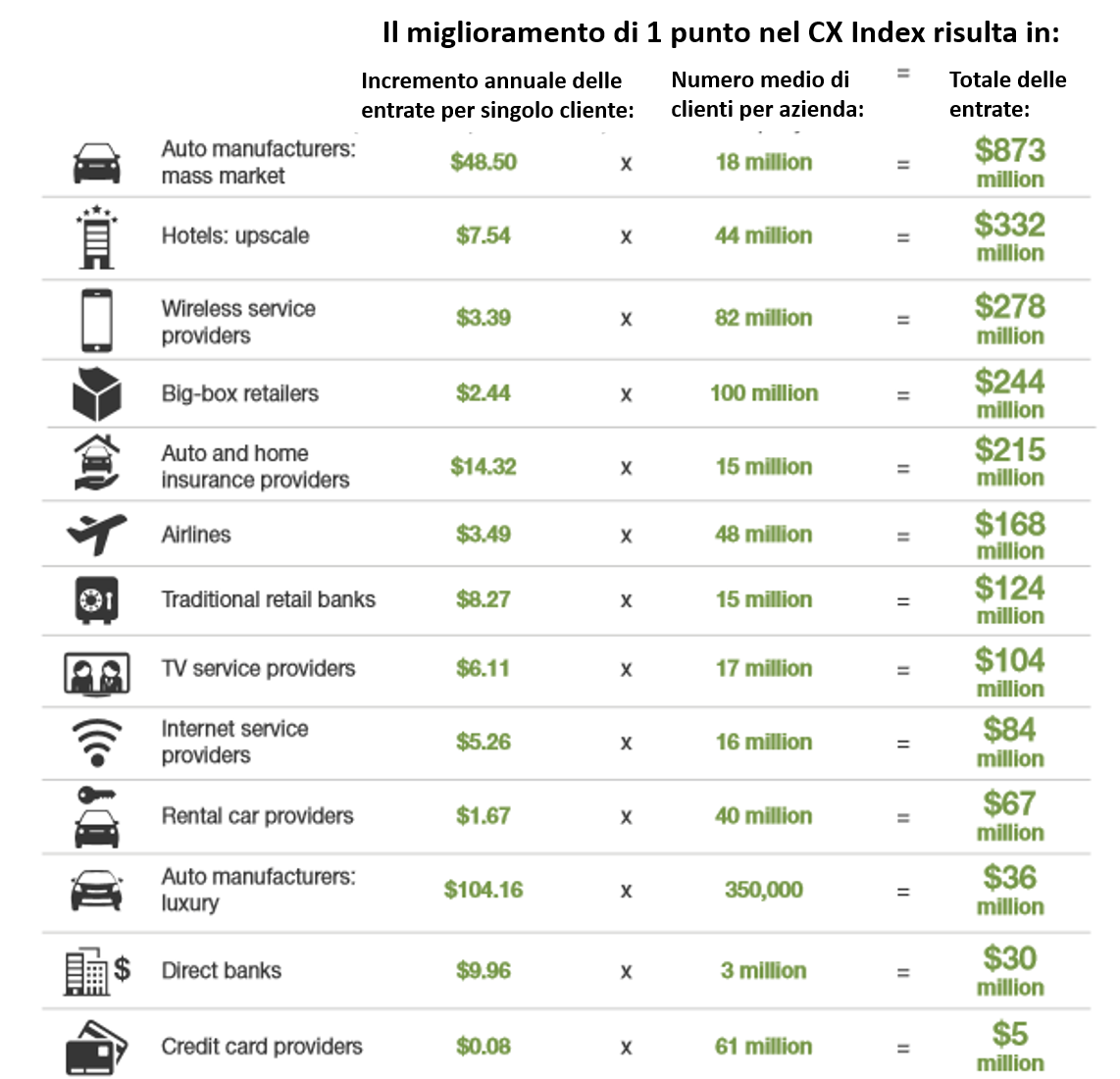Forrester research calculates the value of economic return following improvements on customer experience.
What is the relationship between ultimate Customer Experience and revenue growth? It is a question that often arises for those who start to be in face of planning a work and an experience offer that surprises the customer. It’s a compelling question, as long as the Customer Experience has costs and as long as “it’s a journey, not a destination” (click here to learn more).
On the other hand, the relationship between ultimate Customer Experience offer and customer loyalty, his purchase frequency, the increase in his average spending and the growth in the possibility of generating viva voice, has been widely emphasized in the literature.
Once again, further answers come from Forrester Research, an independent American research company which has been engaged for many years with the drafting of the Customer Experience Index all over the world and which holds hundreds of companies in suspense every year.
THE FORRESTER RESEARCH MODEL
By thanks to recent usage of CX Index data carried on in the United States (122,500 consumers), Forrester was able to underline how changes in the Customer Experience, offered by companies in 13 sectors, have an effect on their revenue. Specifically, in the “Drive Revenue with great Customer Experience – 2017” report, Forrester calculated, for each sector, the economic return related to customer loyalty (assumed as the incessancy of acquisition of goods or services by the same company), to the enrichment loyalty (assumed as the intention to spend more in the future at the same company) and to the loyalty of promotion (Assumed as the incessancy of positive word of mouth).
Of course, the model considers the specific dynamic of each sector. For example, it has been considered that some sectors impose on their customers when they want to leave the company; or the specific relationship value in terms of size and transaction frequency (staying at a hotel has a lower value, but probably it happens more frequently, while the car acquisition has a bigger value but certainly it is less frequent). Also, it has been considered the real value recommendations can have within a sector: the more the market position of a company is higher, the less the recommendation is made to a totally stranger to that company. Furthermore, in some cases, regardless of the levels of Customer Experience, it has been considered that additional acquisition or more frequent purchases are rare, like in the case of insurance companies.
With this model, Forrester was able to calculate the relationship between the revenue growth for each customer and the growth of Customer Experience score. Then the single customer value is multiplied by the average number of customers of the biggest brands within each sector.
THE FORRESTER RESEARCH RISPONSES
Here is the result of the Forrester analysis:
Revenue impact of increasing CX Index Score by 1 point. Source: Forrester Research.
Considering the necessary variables within each sector, Forrester was able to demonstrate that the improvement of the experience offered to customers (being it by solving the big problems to raise low levels of Customer Experience, or making real innovations to raise good or higher score) is strictly related to an actual (and quantifiable) benefit in terms of economic return.






